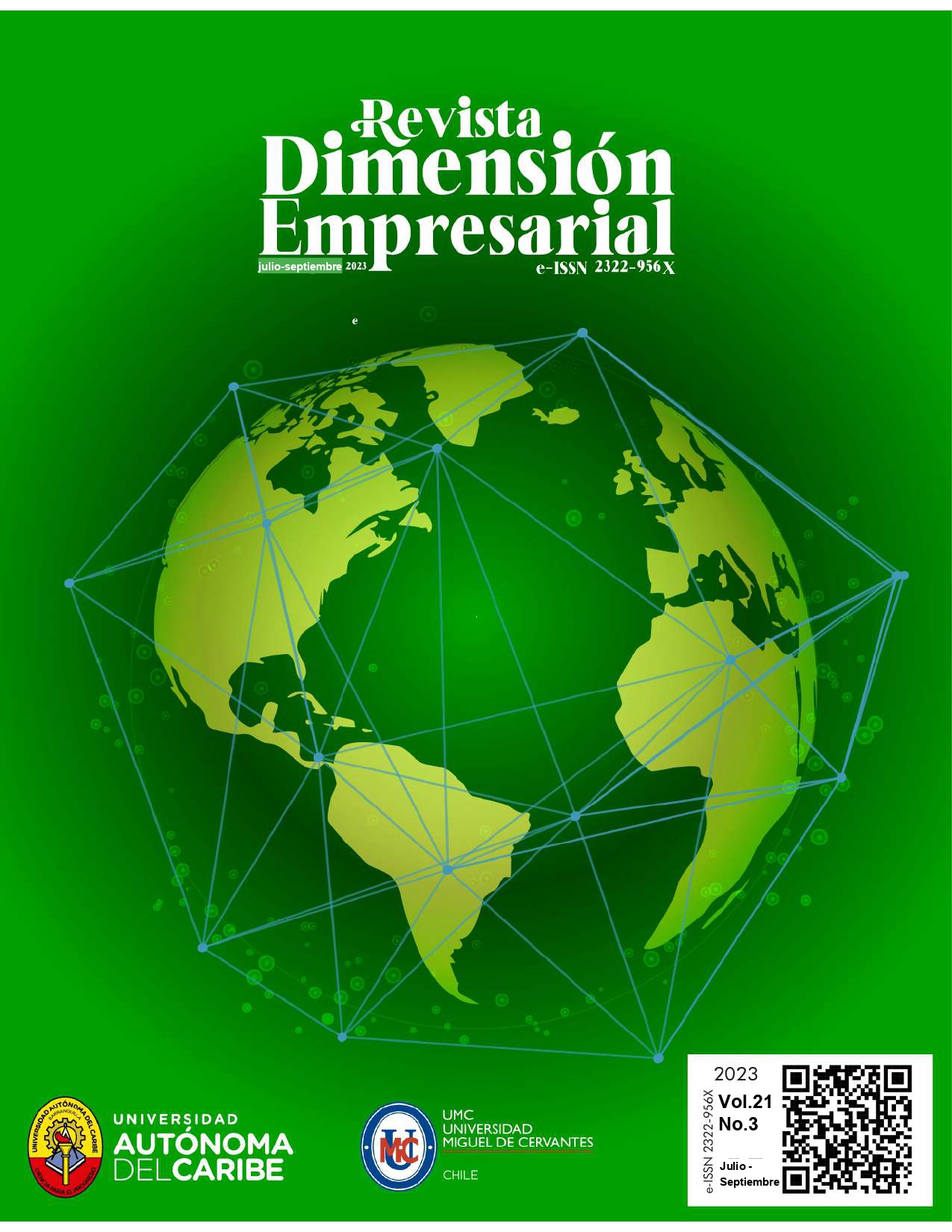Six sigma quality control and multivariate capability indicators to assess customer service in a mobile phone company
Keywords:
Quality, Sigma level, Six sigma, Variables, IndicatorsAbstract
The application of Six Sigma and the multivariate capability index allows for the identification of any variability present in the process and determines whether it is acceptable or not. In this research, using Six Sigma and the multivariate capability index, the customer service quality characteristics of a mobile phone company with six channels to meet its customers' needs are evaluated. Primary data was used to
evaluate the results. The results show poor process performance during the study period. This helps improve service quality, as the "website" and "phone line" channels were identified as the most critical.
References
Alok Kumar Samanta, G. Varaprasad & Ramakrushna Padhy (2020). A systematics review of empirical studies pertaining to Lean, six sigma and lean six sigma quality improvement methodologies in pediatrics. International journal of business excellent. 23, 18-32. https//doi.org/10.1504/IJBEX.2021.111936
Antony, J. (2006). Six sigma for service processes. Business process management journal, 12(2), 234-248. https://doi.org/10.1108/14637150610657558
Benndorf, J. (2021). Statistical Quality Control. In Encyclopedia of Mathematical Geosciences (pp. 1-5). Cham: Springer International Publishing.
Chen, K.S., Hung, Y. H., & Huang, M. L. (2003). Service quality evaluation by service quality performance matrix. Total Quality Management & Business Excellence, 14(1), 79-89. https://doi.org/10.1080/14783360309706
Cherrafi, A., Elfezazi, S., Chiarini, A., Mokhlis, A., & Benhida, K. (2016). The integration of lean manufacturing, Six Sigma and sustainability: A literature review and future research directions for developing a specific model. Journal of Cleaner Production, 139, 828-846. https://doi.org/10.1016/j.jclepro.2016.08.101
Hadian, H., & Rahimifard, A. (2019). Multivariate statistical control chart and process capability indices for simultaneous monitoring of project duration and cost. Computers & Industrial Engineering,130, 788-797. https://doi.org/10.1016/j.cie.2019.03.021
Heckl, D., Moormann, J., & Rosemann, M. (2010). Uptake and success factors of Six Sigma in the financial services industry. Business process management journal.16(3), 436-472. https://doi.org/10.1108/14637151011049449
Ikumapayi, O. M., Akinlabi, E. T., Mwema, F. M., & Ogbonna, O. S. (2020). Six sigma versus lean manufacturing–An overview. Materials Today: Proceedings, 26, 3275-3281. https://doi.org/10.1016/j.matpr.2020.02.986
Markarian, J. (2004). What is Six Sigma?. Reinforced Plastics, 48(7), 46-49. https://doi.org/10.1016/S0034-3617(04)00377-7
Montgomery, D. C. (2020). Introduction to statistical quality control. John Wiley & Sons.
Palací-López, D., Borràs-Ferrís, J., da Silva de Oliveria, L. T., & Ferrer, A. (2020). Multivariate six sigma: A case study in industry 4.0. Processes, 8(9), 1119. https://doi.org/10.3390/pr8091119
Simanová, Ľ., & Gejdoš, P. (2015). The use of statistical quality control tools to quality improving in the furniture business. Procedia Economics and Finance, 34, 276-283. https://doi.org/10.1016/S2212-5671(15)01630-5
Tyagi, V., & Kumar, L. (2020). Univariate and Multivariate Process Capability Indices—Measures of Process Performance—A Case Study. Strategic System Assurance and Business Analytics, 381-392. https://doi.org/10.1007/978-981-15-3647-2_28
Westgard, J. O., & Westgard, S. A. (2016). Quality control review: implementing a scientifically based quality control system. Annals of clinical biochemistry, 53(1), 32-50. https//doi.org/10.1177/0004563215597248
Yanamandra, R., & Alzoubi, H. M. (2022). Empirical investigation of mediating role of six sigma approach in rationalizing the COQ in service organizations. Operations and Supply Chain Management: An International Journal, 15(1), 122-135. https://doi.org/10.31387/oscm0480335
Zhang, M., Wang, W., Goh, T. N., & He, Z. (2015). Comprehensive Six Sigma application: a case study. Production Planning & Control, 26(3), 219-234. https://doi.org/10.1080/09537287.2014.891058
Zhang, M. F., Dawson, J. F., & Kline, R. B. (2021). Evaluating the use of covariance‐based structural equation modelling with reflective measurement in organizational and management research: A review and recommendations for best practice. British Journal of Management, 32(2), 257-272.
Downloads
Published
How to Cite
Issue
Section
License
Copyright (c) 2025 Adel Mendoza Mendoza

This work is licensed under a Creative Commons Attribution-NonCommercial-NoDerivatives 4.0 International License.
Instructions for filling in the Certification of Originality and the Copyright Transfer:
Keep in mind that by pressing the "save and continue" button at the end, you are assuming all the ethical and legal commitments set forth herein. They establish the responsibilities of the legislation on intellectual property rights. For this it is assumed that whoever is carrying out the action of presenting the written work in good faith and represents himself and the other authors of the postulated article.
In this sense, the authors retain all the rights of which they are owners and authorize the free reproduction of the document sent. In the event of being necessary, they will assume, by pressing the "save and continue" button, the legal responsibility derived from the patrimonial rights which are free because of the non-payment by any procedure of the Journal.
Consequently, the author (s) represented by the person who advances the postulation of the article for evaluation and eventual publication,
I (We) declare:
1. I am (we are) the author (s) of the article {here is the name of the article placed automatically}.
2. This is an original work in accordance with the intellectual property law of Colombian copyright.
3. The content of the article of the reference has not been published and that it will not be submitted to any other means of publication in written or electronic support before knowing the decision of the Editorial Committee of Dimensión Empresarial.
4. The signer of this certification guarantees that the commitment acquired here does not infringe any third-party rights.
5. The publication authorization includes its electronic file and its adaptation, if necessary, for its incorporation in the network or in any electronic format or database, as well as attaching the necessary metadata to register the work, trademarks of water or any other security or protection system.
6. The publication authorization includes reproduction on digital media. As well as its distribution and making available through institutional archives through the Internet, distribute copies, and exhibit it in Colombia and outside the country, as well as include the article in national and international indexes.
7. The author assumes all responsibility, including compensation for damages, that could be exercised against the Universidad Autónoma del Caribe by third parties who violated their rights and interests because of the assignment.
For its part, Dimension Empresarial undertakes to respect in any case the rights of the author contained in Article 30 of Law 23 of 1982, or any after it and will make the article available to the users of the Journal so that make a legitimate use of it, as permitted by the applicable legislation, provided that its authorship is cited, commercial benefit is not obtained, and derivative works are not made.
The authors agree to accept the conditions of this intellectual property note, which will be applied to this submission when it is published in this journal.




